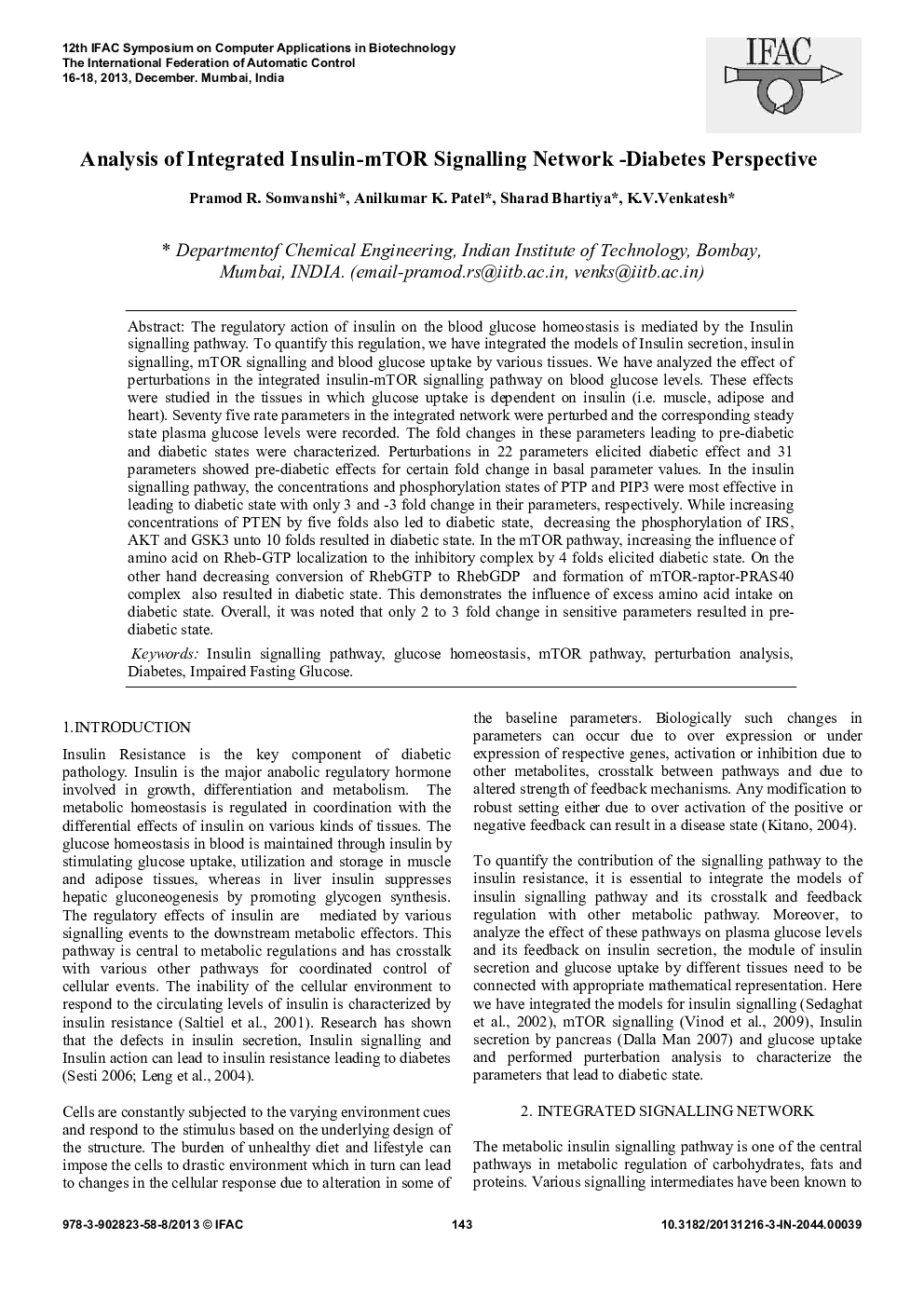| Article ID | Journal | Published Year | Pages | File Type |
|---|---|---|---|---|
| 713963 | IFAC Proceedings Volumes | 2013 | 6 Pages |
The regulatory action of insulin on the blood glucose homeostasis is mediated by the Insulin signalling pathway. To quantify this regulation, we have integrated the models of Insulin secretion, insulin signalling, mTOR signalling and blood glucose uptake by various tissues. We have analyzed the effect of perturbations in the integrated insulin-mTOR signalling pathway on blood glucose levels. These effects were studied in the tissues in which glucose uptake is dependent on insulin (i.e. muscle, adipose and heart). Seventy five rate parameters in the integrated network were perturbed and the corresponding steady state plasma glucose levels were recorded. The fold changes in these parameters leading to pre-diabetic and diabetic states were characterized. Perturbations in 22 parameters elicited diabetic effect and 31 parameters showed pre-diabetic effects for certain fold change in basal parameter values. In the insulin signalling pathway, the concentrations and phosphorylation states of PTP and PIP3 were most effective in leading to diabetic state with only 3 and -3 fold change in their parameters, respectively. While increasing concentrations of PTEN by five folds also led to diabetic state, decreasing the phosphorylation of IRS, AKT and GSK3 unto 10 folds resulted in diabetic state. In the mTOR pathway, increasing the influence of amino acid on Rheb-GTP localization to the inhibitory complex by 4 folds elicited diabetic state. On the other hand decreasing conversion of RhebGTP to RhebGDP and formation of mTOR-raptor-PRAS40 complex also resulted in diabetic state. This demonstrates the influence of excess amino acid intake on diabetic state. Overall, it was noted that only 2 to 3 fold change in sensitive parameters resulted in pre-diabetic state.
